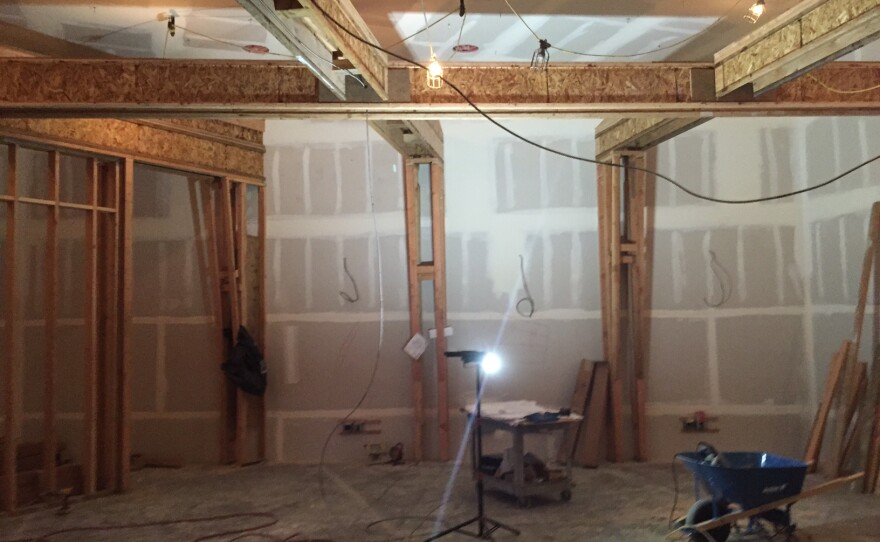Look up when you visit Valley Public Radio's new Barmann-Chaney performance studio and you'll see beams. While they aren't structural, they're there for an important reason - acoustics.
A big part of the process of building a radio station is involved with the issue of sound and acoustic design. An ideal studio environment is both isolated from noise of the outside world or adjacent studios, and also has a good sound of its own, not too "live" and not too "dead" - acoustically speaking.
The largest room in the new building, the Barmann-Chaney Performance Studio is example of both of those ideas. Working closely with the local firm RDT Architecture, the station's acoustic consultants the Russ Berger Design Group and interior designers Facility Designs have fashioned a room that will sound good, look good and perform in a variety of different configurations.
Considerations for acoustical conditions play a part in every portion of the room's design. You may notice that there are no right angles on any of the walls. When seen in plan view, the room's outline is an irregular polygon. This helps to avoid sound reflections from one wall surface to another, which can cause things like unwanted "echoes."
The concept extends all the way to the floors. The concrete pads for all of the studios are acoustically isolated from each other and the rest of the structure. They sit atop hi-tech acoustic isolating material, and foam covers a gap between the studio and adjacent concrete surfaces. Likewise, the studio also has double-walled construction, and there is a second ceiling above the one visitors can see that blocks additional outside sound.
All of these steps are in effort to ensure that what goes on sonically in one studio stays in that studio. For example, a news reporter could work on a report in one room while a live music performance goes on next door. In our current facility that isn't possible due to the lack of acoustic isolation.
Other elements in the room also take sound into account. The large beams, columns and soffits that are being built this month in the studio are massive, but they aren't structural. That doesn't however mean they're just decorative. They're an important part of the carefully planned acoustic design of the studio, meant to make sure the room doesn't just sound quiet, but also sounds "good."

For live music performances, musicians want a space where they can hear the sound of their instrument, but not one that is too "live" with hard surfaces and too much reverberation of sound. The beams will help diffuse sound, and at the same time also conceal lighting fixtures. In between the beams, acoustic panels will hang from the ceiling to provide further sound diffusion.
In the next few weeks, the walls of the studio will get their own acoustic treatments. Sound rated glass will be installed providing a look into the studio from the Master Control Room, the Production Control Room and the main hallway. Special acoustic panels with fabric stretched over compressed fiberglass insulation will cover the walls.
Even the air conditioning units are part of the acoustic design. Unlike the station's current building, the new units don't sit on top of the studios, they're far away on other parts of the building to reduce noise. To further reduce vibration they're also outfitted with special acoustic isolators that promise to further reduce noise from the HVAC system. It's all part of a comprehensive acoustic package that will make FM89's broadcasts sound better than ever.












